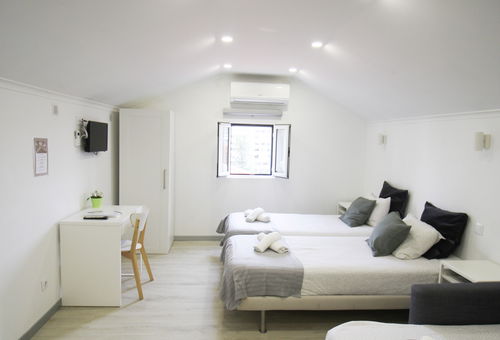The Orient museum
Inaugurated in 2008, this museum has set up in the old warehouse of the port of Lisbon. Moreover, it is 15 minutes walk from LX Factory and fits perfectly in the evolution of the former industrial district.
Opened a little less than 10 years ago, the Museum of the Orient brings out Portugal's historic presence in Asia and also allows visitors to discover the collections of the former Kwok On Museum (Paris), related to the arts in Asia.
The scenography is particularly well worked and each object is installed in the windows as a work of art. Decorations, furnishing, theater costumes, ... The collections are very rich and bring back to the conquests of a glitzy Portugal.
A change of scene installed a little outside the city center but it is well worth the detour!
The Museum of the Orient is unique! Here you can appreciate Chinese, Japanese, Indo-Portuguese (colonial style) or Timor art. Each of them shows the long relationship between Portugal and the East. The cultural program of the museum is very varied and tempting, passing through oriental music, dance, theater and cinema.
The Museum of the Orient, in the district of Alcântara, has set up in a former cold storage shed. Funny places for a museum, a bit lost in the middle of an industrial area.Nothing distinguishes it from the buildings around, which is quite destabilizing ... until you arrive at the entrance. We took advantage of the night life of Tuesday night to visit its collections.
The relative darkness in which the collections are plunged. It is also very strange to evolve in an environment as black, strange but pleasant. The museography is very successful! And the lighting of the windows makes the quality of the photos very poor in terms of quality ... Whatever: despite the blur and the bad light, the beauty and the detail of the presented objects are brought out.
The museum is divided into three parts: on the ground floor, the temporary exhibitions. On the first floor, there are pieces dating from the presence of Portugal in Asia: objects with a religious nature, furniture, dishes, textiles, everyday objects ... All accompanied by many explanations, both on the objects in themselves and on the historical context, the different stages of the installation of Portugal in Asia, etc. It was in this part that we spent most of our time.
On the second floor, the exhibition revolves around beliefs, myths and the arts. This time, direction both China and Thailand or India. Snuffboxes began to be made in China in the late seventeenth century. Brought by the Portuguese in the mid-sixteenth century, tobacco was considered at the time as a medicine, treating simple headaches such as respiratory disorders, before becoming a symbol of social status when it arrived at the court of the Emperor. By the end of the eighteenth century, its use had spread to all social classes.
 Essential
Essential


